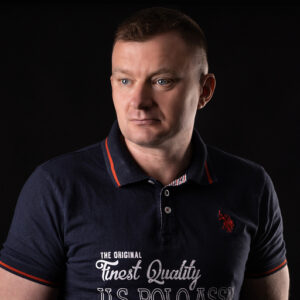Table of Contents
Water ozonizers have been used for years in marine aquaristics. For various reasons, they have not gained much popularity. In this article I will describe why you might want to use an ozonizer, how to use it and what risks it entails.
What are the advantages of ozonating water
Ozonation has many benefits, from increased water clarity to cleansing the water of bacteria and micro parasites.
Healthier corals and increased exposure of polyps due to oxidation and breakdown of coral defence toxins. Crystal clear water provides better penetration of light which increases its bioavailability to corals. Ozonation of the water also increases the efficiency of the skimmer due to the fact that ozone causes waste particles to attract each other, creating larger particles that are easier for the skimmer to skim.
Additional benefits include: reduced water yellowness, reduced algae, reduced cyanobacteria, increased ORP of water, reduced nitrates, reduced pathogenic bacteria, reduced circulating toxins in seawater.
What is ozone?
Ozone is a gas that, unlike naturally occurring oxygen, contains 3 rather than two atoms of it. It is so unstable that it cannot be stored in containers.
In nature, oxygen makes up a large part of the atmosphere, while ozone makes up only a small fraction of it. Ozone is found high in the Earth’s atmosphere. It is a strong absorber of UV radiation.
At lower altitudes, ozone is less desirable because people and animals who breathe it can experience lung damage.
How does an ozonator work?
It all starts with an air pump, which is connected to the ozonator. Between the pump and the ozonator may be an air dryer. The next step is the ozonator.
The method used by most ozone generators is to run the air through a high-voltage electrical discharge, which breaks up some oxygen molecules, and when these reconnect, ozone is produced. If there is moisture in the air it reduces the amount of ozone generated and causes the formation of nitric acid. Nitric acid can lower our pH in the aquarium and provide nitrates to the aquarium. That’s why it’s a good idea to use an air dehumidifier complete with an ozonizer.
In the next step, ozone flows into the chamber of the ozonator. The amount of ozone recommended by equipment manufacturers is about 0.3 mg/h per gallon or 0.08 mg/h per litre of aquarium water. Many aquarists use ozone in smaller doses.
In the ozonator chamber, ozone reacts with organic substances including ammonia, with bacteria and viruses, and with chemical compounds such as iron, bromides, iodides.
Ozone survives for a few seconds in water. It leaves behind oxidants in the water, such as sub-bromic acid BrOH, this acid is potentially toxic so the reactor leachate should be passed through activated carbon, which breaks down these oxidants. The air coming out of the reactor should also be passed through activated carbon or, for example, exposed outside the room window.
How to test the level of ozone in an aquarium?
Ozone raises the oxidation-reduction potential (ORP) of water.Therefore, an ORP meter is used to monitor the level of ozone in the aquarium. You can also use a device that will turn the ozonator on and off when the appropriate ORP level is reached.
Often you can achieve satisfactory results in an aquarium using an ozonator as low as 300 mV ORP level.
Summary
While ozone used in marine aquariums has many benefits, it also has its negative side. When reacting with seawater, ozone produces highly oxidized halogens. These oxidants should be removed with activated carbon from the water, as they can otherwise harm sensitive organisms.
In this very short article I have tried to introduce the topic, what an ozonator is, and how to use it properly.
Whether it is worth using an ozonator or not is left up to the aquarist. As you can see in the article, the ozonator provides a lot of benefits, but you need to understand how it works and how to use it properly. I invite you to discuss the ozonator on Social Reef.
About the author

Marek Protasewicz
Reefkeeping has been my passion for over 10 years now. I love learning. The hobby has taught me many valuable lessons, patience being the best example. Combining work and passion is my path. I run Crazy Coral, a marine aquarium shop, for a number of years. Building this business from the scratch I learnt from my own mistakes at a heavy cost.
Later I managed a project aimed at development of methods for quick growth of Corals in non-natural conditions. The project was carried out by Get Sales, Poland. Presently, I am responsible for distribution strategy at Reef Factory, of which I am a co-founder. The company produces smart devices for marine aquaristics. The last projects I have been involved in are Social Reef and ReefPedia.



